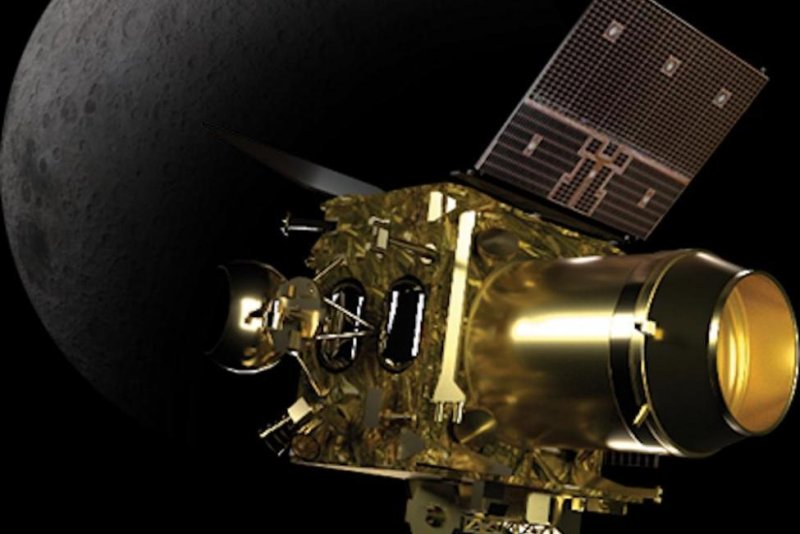India’s Chandrayaan-2 successfully entered the moon’s orbit as it prepares to land a rover on its surface next month. Photo by ISRO
Aug. 20 (UPI) -- Some 30 days after liftoff, India's Chandrayaan-2 spacecraft successfully entered the moon's orbit on Tuesday after performing one of the mission's most difficult maneuvers, the nation's space agency said.
The spacecraft began orbiting the moon following the completion of a lunar orbit insertion maneuver that took about 28 minutes to execute, the Indian Space Research Organization said.
ISRO Chairman Kailasavadivoo Sivan said it was one of the most difficult maneuvers of the probe's mission as the smallest mistake could have doomed the entire project.
"A higher-than-expected approach velocity would have bounced off the spacecraft into deep space while a slow approach would have led to the moon's gravity to pull Chandrayaan-2 and crash it on the lunar surface," he said Tuesday after the craft had entered the moon's orbit. "The approach velocity had to be just right and the altitude over the moon rather precise. Even a small error would have killed this mission."
He said that with the successful completion of the lunar orbit insertion maneuver, the spacecraft had hit "a major milestone" and was now orbiting the moon at an inclination of 88 degrees.
Next, it is to perform a series of orbit maneuvers to enable it to enter its final pass over the lunar poles at a distance of about 62 miles from the moon's surface, before the lander, Vikram, separates and enters its own orbit around the moon.
The lander will then perform a series of braking maneuvers to "soft land in the south polar region of the moon on Sept. 7," the ISRO said in a statement.
After landing, Vikram will release Pragyan, the rover.
Chandrayaan-2 launched from India's Geosynchronous Satellite Launch Vehicle in July and had been circling Earth for the past few weeks, slowly using its propulsion system to increase its orbital distance to escape its gravity.
"On Sept. 7, at 1:55 a.m., lander will land on the moon," Sivan said. "Whatever is humanly possible has been done by us."
The next lunar-bound orbit maneuver is scheduled for Wednesday, ISRO said.















